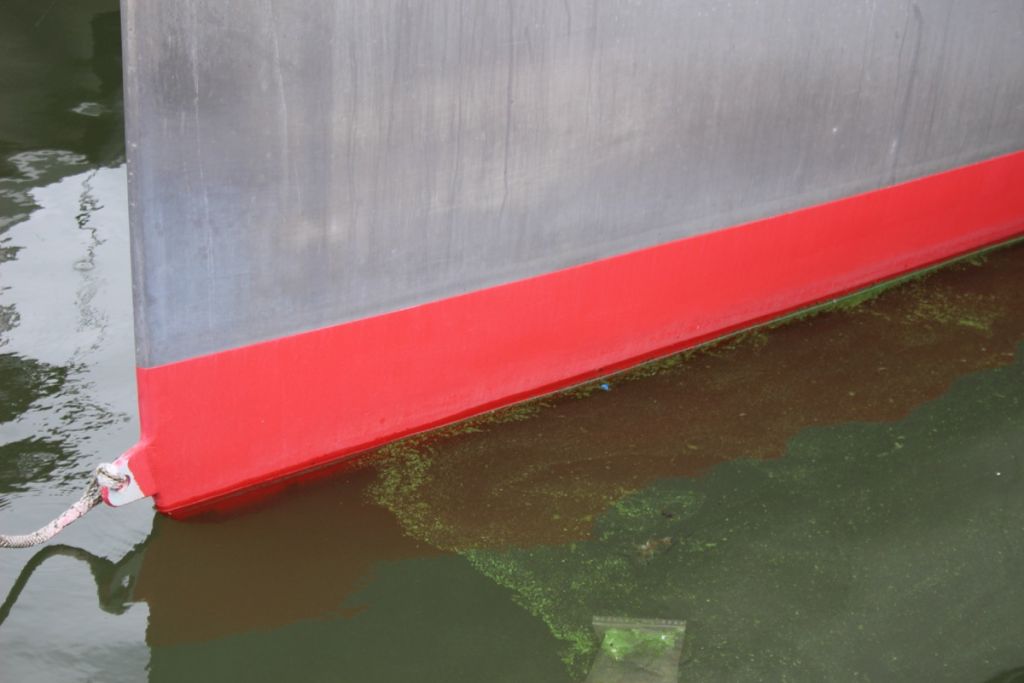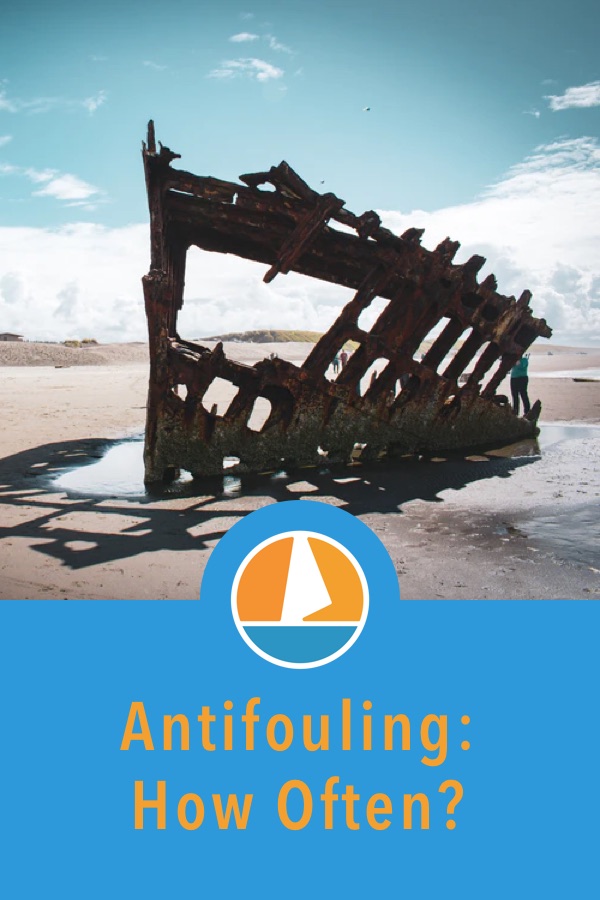How Often Should You Antifoul a Boat?
It's spring, and you're ready to sail after a long, dark winter. Do you really need to get out the rollers and protective gear and put more expensive antifouling on the bottom before you sail, or can you just drop your boat in the water this year and go?
How often should you antifoul your boat? For most casual sailors and cruisers in areas with seasonal sailing, you can probably antifoul every other year. There are a lot of variables which apply, so the answer isn't that simple. Some variables include:
- Geography and the length of your sailing season and if you have any seasonal layups.
- The type of bottom paint.
- How you use the boat affects not only which antifouling you should use on your boat, but how long it will last.
- How often you use your boat.
- How much paint you started with
I'll explain these variables in length below.

On this page:
Where Do You Sail?
Geography and were you sail and store you boat are the largest factor in how long your bottom paint will last. In warm water marine pests grow faster and chemical reactions are faster. Critters like barnacles and mussels may have constant breeding seasons when their young are trying to settle on your boat.
A sailor in the cold waters of Maine, New England, or the Pacific Northwest will get more life out of her bottom paint than someone in Florida or the tropics. Steps can be taken to counter this - like more coats of paint - but the fundamentals don't change.
Warm water sailors often have their boats in all year, which both helps and hurts paint durability by using it more. It renders some paints ineffective when they sit out of the water for a long time, so even though a boat in Maine may sit out the winter the bottom paint may also lose effectiveness. Some bottom paints may be refreshed with a light scrubbing and scuffing before launch.
Finally, different waters have different growth on boat bottoms. Certain types of paints will work better in some areas than others. The barnacles and oysters in New England respond to different biocides than the sponges and weeds in Florida. Talk to people that know the local waters and find out which type of bottom paints work and how they are applying them.
Bottom Paint Basics
There are a few things you need to know about bottom paint to help this discussion make more sense.
There are several types of bottom paint.
Bottom paints come in three basic types - soft ablative, hard, and hybrids. Soft ablatives slough off your boat over time, releasing biocides as the paint melts away. Hard paints contain biocides which leach out, and hybrids are ablative paints with a harder finish that is more resistant to sloughing and cleaning.
The bottom paint you choose will depend on your budget, how you use your boat, and where you will use it.
Bottom Paints Contain Biocides
That's how all of them work - they all release a chemical agent toxic to marine life which keeps it from settling on the surface. Copper is still one of the most common, though new products are always being tested. The environmental impact of biocides in bottom paint is the reason they are regulated.
The way they release the biocide is a key difference between the major types of bottom paint and how they work. Since there's a finite amount of biocide in a can of paint, eventually it will all get released and the remaining paint will no longer be effective.
The more biocide in a paint, the more effective it will be. Most paint manufacturers make it clear in the product literature how much biocide is in the paint, it may even be incorporated in the name. The paints with the most biocide content are often the most expensive.
Paint Technology is Always Changing
The bottom paint industry is constantly innovating. Between increased restrictions and outright bans on certain types of biocides to attempts to increase adherence and durability, new paints are being released every year. And old paints get retired with regularity as laws change and better products are released.
Choosing the same paint every year insures compatibility - the old paint will always stick. However, a trusted paint may disappear, or a new one may show upon the market that is more effective than what you've been using. If you can't buy the paint you like any more, you will have to find a compatible alternative or strip the old paint before covering with new.
A Lot of Paint?
Ablative paints benefit from multiple coats and layers. Since the paint sloughs off over time, a couple of thick layers of paint will provide antifouling longer than thin layers or a single layer. There will always be some paint build up, but the ablatives will dissolve away and give longer coverage.
Hard paints, since they do not dissolve off, will build up. Multiple layers of paint that are too thick will trap the biocides under the top layers of paint and provide no additional coverage. Once the chemicals have leeched out of the top layer of the paint, it will lose effectiveness.
Pay attention to the condition of your bottom paint at the end of each season and before you paint in the spring. If you find signs of paint peeling or flaking, it may be time to strip the old paint off before your next repainting. Once it is too thick, the old layers may flake off under the new paint causing your bottom to lose paint over the season.
When Is It Time to Antifoul Again?
The obvious way to tell that your antifouling is no longer effective is signs of growth on your bottom. A little slime layer on a painted bottom is normal, but a buildup of harder growths, sponges, or visible weeds is a good sign that your paint is no longer getting it done. This is not absolute, however.
If your boat does not move for a long time, you may get some growth and build up on it anyway, even with fresh bottom paint. Ablative paints need water moving over them to slough off, expose biocide and protect your bottom. If the growth comes off easily, your bottom paint is still working. An occasional gentle scrubbing with a green abrasive pad may prevent this if you can't take your boat out of a while.
Some paints will only be good for a single season, so their lifetime is well known. It's often marked right on the can. If you race your boat and use hard bottom paint that is wet sanded and scrubbed weekly, I can almost guarantee you you'll need a new coat sprayed on in the spring.
A common technique with multi-coat applications paint is to use a "tell" layer first. If your chosen bottom color is black, use a contrasting color like blue or red for the first coat. When the black layer wears thin, the tell layer will start to show through and you’ll know it's time to add more paint.
How Can I Make My Antifouling Last Longer?
If you use an ablative paint, there are a few ways to get a coverage for a little longer between re-paintings.
- More paint. An initial application with more layers of paint and thicker coverage will last longer. Two or three coats should last a single season, but three or four coats may get you through two seasons.
- Very gentle scrubbing. If you get buildup because you don't move your boat take care when you clean the bottom. Scrubbing your bottom to remove growth also removes softer paints. So if you have to scrub, use as little force as you can to take the growth off. Co-polymer paints can take more scrubbing than soft ablatives.
- Don't paint too long before you launch. Exposure to air and sunshine can cause some paints can lose some effectiveness or build up an oxidized layer on the outside of the paint that needs to be scuffed off.
- Put extra paint on the leading edges of your keel, rudder and hull. These have the most exposure to moving water and antifouling will wear faster from these points. It's not uncommon for buildup to start here before other places on the hull.
- Refresh your paint before you go back in the water after a layup. This may involve a light sanding or scuffing with a pad. Consult your paint manufacturer for specific recommendations.
Hard paints have fewer options to extend the time between antifouling applications, as adding more paint doesn't increase effectiveness.
- Scrub the bottom periodically when the boat is in the water. Hard paints can take aggressive scrubbing and keeping the bottom clear of small growth and slime will prevent future buildup that you can't get off so easily.
- Avoid long layups out of the water during the season, as most hard bottom paints will lose effectiveness and the boat will need repainting.
- Most hard bottom paints will need to be refreshed every season anyway, and will require light sanding to remove some of the older paint. Proper surface preparation is critical to an effective paint application.
Did you find the answer to your specific question?
👍 9 👎 0


Leave a comment